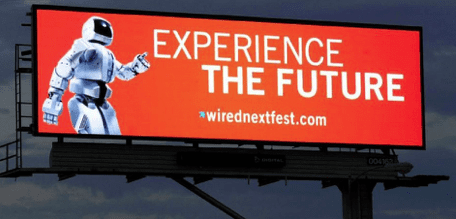On July 25, OAAA hosted a webinar for non-members, explaining how the trade association boosts sales and protects assets. Insider is posting a three-part series based on this webinar. In Part One, posted August 1, Myron Laible explained OAAA problem solving. In Part Two, Ken Klein describes the advance of digital billboards, and OAAA’s role.

More than 8,000 digital billboards are deployed nationwide, a tribute to new technology, advertiser demand, and regulatory acceptance.
As Myron Laible mentioned in Insider on August 1, OAAA helped set standards for digital billboards, including lighting standards adopted by state and local governments.
Here are four additional ways that OAAA helped the digital rollout:
Legal
Scenic America sued, fighting digital billboards all the way to the US Supreme Court. OAAA represented the industry, defending digital via top legal talent. Scenic’s legal attack was rejected at every stage of a long, expensive, high-stakes battle in court.
The failed Scenic lawsuit was aimed at federal Guidance issued September 25, 2007, which recommended to states how to regulate digital billboards. Early in 2007, an independent report based on analysis of varied viewpoints of competing stakeholders identified “new technology” as a top potential common ground:
In 2005 and 2006, OAAA coordinated industry input to the national “assessment” (public hearings, interviews, and surveys) that generated the January 2007 report that pointed – in a positive way — to new technology.
Meanwhile, nearly all states have taken steps to regulate digital billboards.
Research
OAAA pioneered research on traffic safety, analyzing accident records across the country that showed no statistical connection between digital billboards and accidents.
Industry-commissioned research also studied driver behavior by tracking eye glances. Subsequent government-sponsored research also used this method. The government’s findings, released in late 2013, echoed industry research that digital billboards are not distracting.

Partnerships
Government uses digital billboards on behalf of safety, thanks to billboard partnerships with law enforcement and emergency officials.
A decade ago, OAAA signed agreements with the FBI to help apprehend fugitives and the National Center for Missing & Exploited Children to display AMBER Alerts.
While driving in Oregon, I was impressed to see this digital bulletin co-sponsored by the National Highway Traffic Safety Administration (NHTSA):

Platforms to Tell Our Story

Gino Sesto of start-up Dash Two wanted to tell the story of digital billboards and safety.
OAAA was honored to provide him a platform, to give voice to thought leadership . . . and also to share with Nancy Fletcher’s 5,000 Twitter followers:

(Ken Klein is Executive Vice President of Government Affairs for the OAAA)
[wpforms id=”9787″]
Paid Advertisement

















